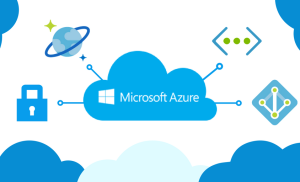
New GSMA IoT Specification: What It Means for Telcos
In July 2023, the GSMA released the eSIM Internet of Things (IoT) technical specification (SGP.32). SGP.32 provides a technical description of the eSIM IoT architecture and requirements released in April 2022.
The new eSIM IoT specification accomplishes several things, including introducing a standardised tool to make eSIM management and provisioning cost-efficient even for constrained IoT devices. This makes eSIM a highly viable cellular connectivity solution for enterprise IoT.
Read on to learn more about SGP.32 and how it can help telcos capture a bigger share of the enterprise market.
The eSIM M2M Specification
The existing cellular machine-to-machine (M2M) infrastructure uses the eSIM M2M specification.
In the current eSIM M2M specification, managing, updating, provisioning, or otherwise triggering any operation on an eSIM-enabled M2M device requires sending a text message (SMS) to that device. This type of push model is problematic for low-power M2M devices or those constrained by their communication protocols.
How about the pull model of the existing eSIM consumer specification – why can’t that be used to provision and manage eSIM M2M instead? The eSIM consumer specification is also impractical for M2M devices that do not have a user interface from which pull operations can be initiated.
Some M2M devices are also deployed in inaccessible or difficult-to-reach locations (e.g., in an oil rig in the desert, in an intercontinental container hauler). They make user-triggered operations impracticable.
The New eSIM IoT Specification
According to the SGP.32 official document, the new GSMA technical specification for eSIM IoT provides a technical description of the following:
- Remote provision and management of the embedded universal integrated circuit card (eUICC) in IoT network-constrained or user-constrained devices
- The eUICC architecture for IoT devices
- The interfaces used within the eSIM IoT architecture
- The security functions used within the eSIM IoT architecture
All these provisions enable eSIM IoT. However, the first item in the above list has a significant impact on the large-scale implementation of eSIM in enterprise IoT applications.
SGP.32 provides for an eSIM IoT remote manager (eIM) and an IoT profile assistant (IPA), and these components resolve the challenges of triggering eUICC operations on constrained IoT devices.
The eSIM IoT Remote Manager and IPA
The eSIM IoT remote manager is software that can run from a server (say, an eSIM management platform on the cloud) or an onsite or edge computer. The IPA sits on the device, running on either the eUICC or the device module.
The eIM is an intermediary between the device and the eSIM management server. The IPA serves as a proxy between the eIM and the eSIM. Together, the eIM and IPA make it possible to remotely enable, disable and delete profiles on constrained eSIM IoT devices.
The eIM does not only make remote provisioning possible for constrained devices. It also makes eSIM profile management for IoT devices easier all around.
The eIM can bulk-push profiles to whichever IoT devices are online. Additionally, it can queue operations for devices that are not online; offline devices can pull whatever transactions are outstanding the next time they go online.
What the New IoT Specification Means for Telcos
The eIM architecture element enables bulk provisioning and management of eSIM IoT. It also allows the use of eSIM in low-power, communication-constrained, no-user-interface IoT devices.
Essentially, the new eSIM IoT specification removes the barriers to large-scale eSIM IoT implementation among enterprises. As such, SGP.32 is expected to drive an eSIM IoT uptake in the following years.
Juniper Research says the number of IoT connections will increase by 800% between 2023 and 2026. Therefore, the new GSMA eSIM IoT specification represents an excellent opportunity for telcos to capture a burgeoning enterprise IoT sector.
Telcos can provide eSIM orchestration services to network operators, aggregators and enablers. Theseentities provide IoT connectivity services and solutions to enterprise clients.
They can provide eSIM connectivity solutions directly to enterprises. Additionally, they can enable third parties (e.g., start-ups, software-as-a-service providers, etc.) offering IoT or derivative solutions to enterprises.
Through the new eSIM IoT specification, telcos can tap into previously inaccessible markets, such as smart cities, healthcare monitoring, industrial automation, logistics, digital wallet IoT payments, and automotive manufacturing. Offering eSIM connectivity to players in these industries is a straightforward way of capitalising on eSIM IoT.
However, telcos don’t have to stop there.
Since the eSIM IoT specification allows for easier deployment and management of IoT devices, telcos can now expand their services beyond traditional communication. They can orchestrate different technologies and combine them into eSIM-enabled turnkey solutions that their target enterprise clients can use out of the box.
eSIM IoT: An Opportunity for Telcos
Telcos have always been associated with providing communication and connectivity services. They enable consumers and enterprise clients to make phone calls, exchange messages and connect to the internet.
The new eSIM IoT specification represents an excellent opportunity for telcos to expand into the enterprise IoT market. Not only can they provide an eSIM platform to enable eSIM IoT. They can even orchestrate technologies and provide enterprises with bundled services and eSIM-enabled IoT solutions.





